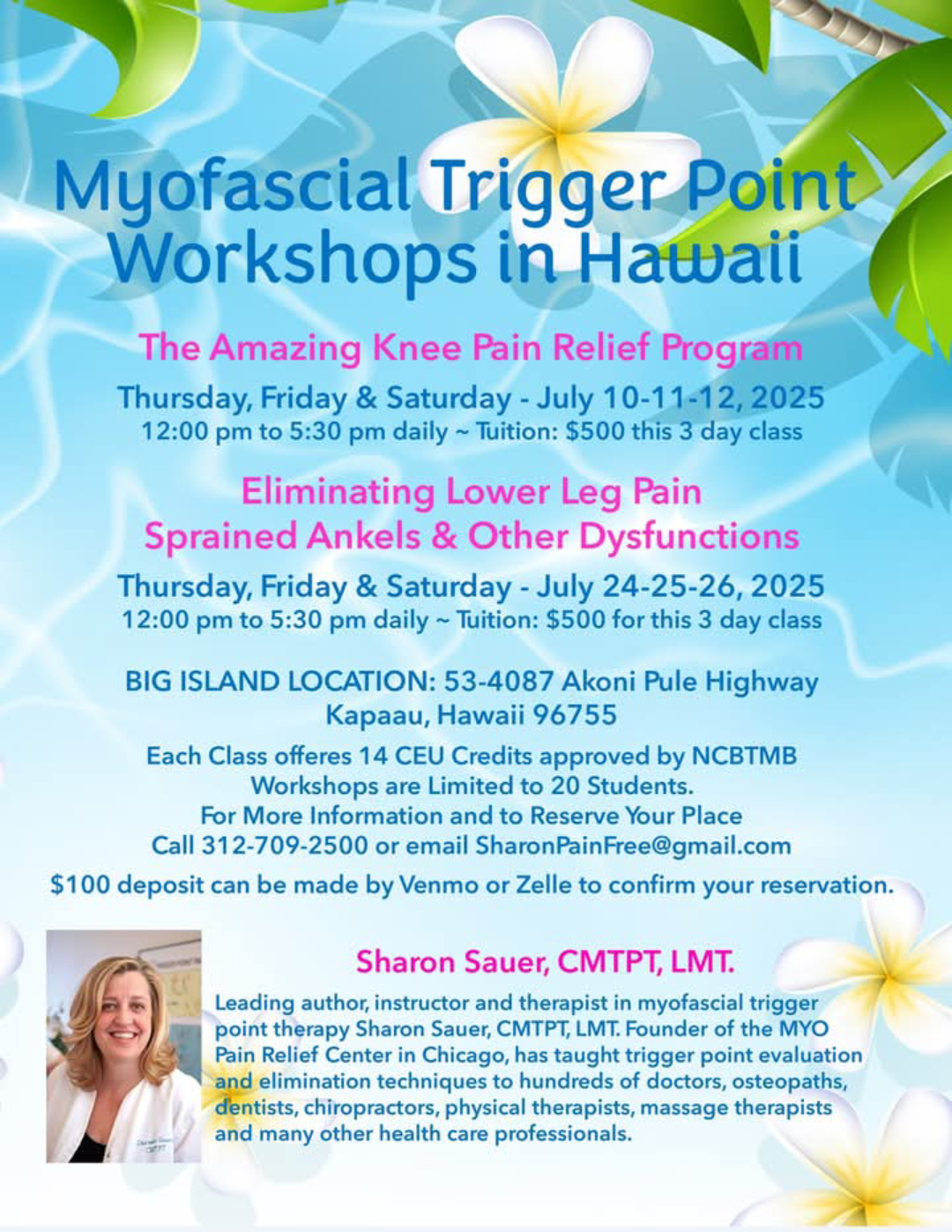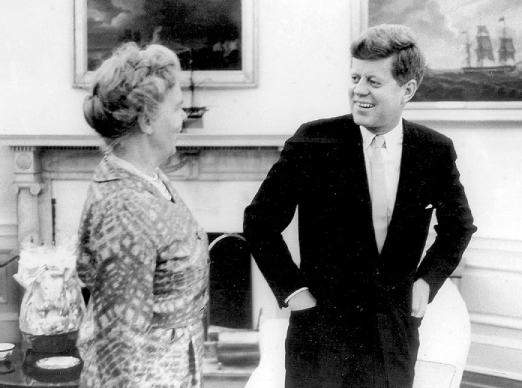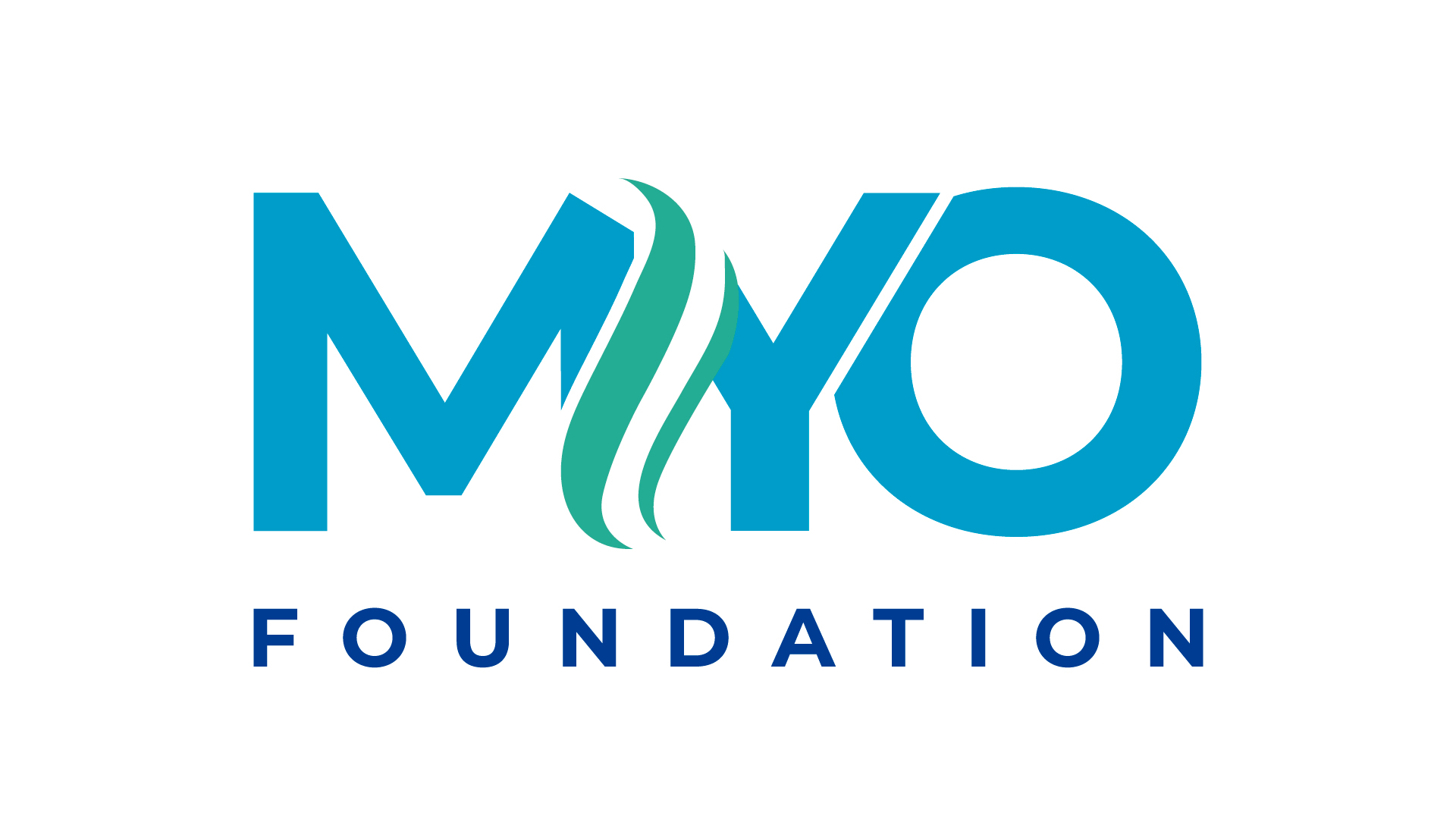The Symposium is the world's premier meeting for the research and practice of Discover the Healing Power of Myotherapy
Hawaii Myofascial Symposium 2025
Attend this wonderful Symposium that will include Keynote Speakers and Breakout Sessions, all in the the tropical paradise in Hawaii at the OUTRIGGER Kona Resort & Spa on October 23rd, 24th & 25th.
Join us for an inspiring journey into myofascial pain—discover valuable insights, hands-on techniques and innovative treatments with renowned experts, all designed to expand your skills and elevate your practice. Register Today!

Latest Insights on Myotherapy
Dr. Janet Travell - Mother of Chronic Pain Treatment
Written By Nancy Shaw
Dr. Travell began her over 80 year career as a cardiorespiratory physician and became a renowned cardiologist. But there was an observation she made that just didn’t make sense: after patients had open-heart surgery, they often experienced a “frozen shoulder.”
It made no sense – the shoulder was not in any way involved in the heart surgery.
Or, maybe it was?! She realized that following the surgery, patients were told to limit reaching, lifting, or overusing the left arm to prevent pulling on the surgery stitches o allow complete closure of the incision.
So, to be extra careful, the patient didn’t do things with the left hand/arm, resulting in a frozen shoulder.
In palpating the shoulder, the patient would indicate pain, not where Dr. Travell pressed but elsewhere – maybe in the hand. If she pressed a muscle in the neck, they might feel pain in the back.
RECOGNITION OF “TRIGGER POINT” SENSITIVITY
Well, the wheels of her mind were turning. She decided to leave cardiology and took her photographic memory and began studying muscles in the German literature of the late 1800s. She recognized that the “referral patterns” were powerful information. If someone had a sensitive point in a muscle (she later coined it to be a “trigger point”), it would always elicit the exact same referred pain. And, this was true on everyone; it didn’t change with people. They didn’t have a different pain pattern if it was the same sensitive point in the muscle.
She fervently began documenting and recording these trigger points and referral patterns. She singularly created an entire field of new medicine: myofascial pain and dysfunction. The specificity included documenting every muscle for its own location and referred areas.
Dr. Travell didn’t quit there. She recognized “traditional medicine” was directed and focused on the body “structure.” Structure issues could be identified, documented, treated, and fixed. Therefore, each specialty could have similar treatment because structures will “heal.” So, there were specialties for each part of some of those structures: bones, skin, kidneys, lungs, heart, blood, and on and on.
On the other hand, muscles “function.” That’s how we move, because muscles “learn”: whatever pattern of movement we teach them, they just repeat it, good or bad.
ANOTHER “LIGHT BULB”
Another “light bulb” went off in Dr. Travell’s mind. Muscles contract and relax. They contract to perform movement. She also realized that muscles don’t move from contracted to relaxed on their own. We need to intentionally “stretch” them to a resting neutral position. If we keep contracting and don’t bring the muscle back to a resting position, the tension stays in the muscle. If left with a buildup of tension, the muscle will eventually stay in a partially contracted position (eventually cramping), become weaker (less contraction potential), and then elicit pain. Too often we just compromise, or change the muscle position and start over. For example, if it hurts the shoulder to reach behind you to put your arm in a coat sleeve, you just put that arm in first – the other arm can reach behind. There are many adapting movements we make to be comfortable.
Thus, the crux of her treatment is a very specific protocol. It consists of 75% of treatment discovering the many compromised postures and movements we make to avoid pain. Identifying those factors is made by studying photographs your patient sends prior to their treatment session so you can readily identify the cause of pain issues. (Doctors get an x-ray or MRI; we get all postural photos.) What a story they tell.
A JIGSAW PUZZLE
Dr. Travell would then giggle that it becomes a jigsaw puzzle: put the pieces together that result in pain. She treats the “why” (all the puzzle pieces) of the pain, not where the patient may be pointing that it hurts. Another giggle for her would be the lack of complexity of treating back pain that the majority of the time comes from two muscles in the front of the body: the rectus abdominis (bending us forward) and the iliopsoas (bending at the hip joint). We lean forward and bend at the hip for movements all day long. And as a result, we tend to sleep with our knees pulled up so we are somewhat curled the same way.
That tightness varies with every patient’s posture. They each use their bodies differently. Therefore, there are different factors for each patient to change – not hard once they know what’s causing their pain. Then a good muscle stretching program to “teach” new muscle balance of function and relaxation.
What all of this is saying is that Dr. Janet G. Travell was a Genius, who never abused it but used it in joy to discover, teach, and promote the “simplicity” of movement function.
JFK’S WHITE HOUSE PHYSICIAN
Of course, we know Dr. Travell was to become the first woman appointed as White House Physician. This was the personal selection by President John F. Kennedy, in appreciation of her successful treatment of his chronic back pain, in a PT-boat injury. No, you are correct, she did not address/treat his back pain – she treated the “learned” incorrect functioning of the muscles that resulted in the back pain.
Through clinical practice and correct scientific research spanning more than 50 years, Dr. Travell developed the basis for a totally innovative approach to the elimination of pain.
The medical texts, Myofascial Pain and Dysfunction, The Trigger Point Manual, Vol. 1 & 2, Travell and Simons, delineate muscle by muscle the anatomy, characteristic trigger points, referred pain patterns, common symptomatology, releases, and basic stretches. A detailed section of the books puts forth perpetuating factors as they apply to all muscle function. The books are not to present a “modality” but a full treatment “protocol” that is to be utilized.
With the medical texts and her comprehensive approach to patients, Dr. Travell left us an astonishing legacy for effective treatment of chronic pain for generations to come. It is up to us to carry that forward.

Unlocking the Power of Myotherapy: Latest Insights in 2025
Myotherapy, a form of manual therapy that focuses on the assessment, treatment, and management of musculoskeletal pain, continues to evolve in 2025 with new research, tools, and an expanding role in holistic healthcare. While traditionally used to treat trigger points and soft tissue dysfunction, myotherapy is now being integrated into multidisciplinary wellness plans and gaining recognition in both clinical and athletic settings.
1. Tech Meets Touch: The Rise of Smart Myotherapy Tools
One of the most significant developments is the integration of wearable technology and AI into myotherapy practices. Smart devices now help therapists track muscle tension, joint movement, and treatment response in real-time. This data-driven approach is enhancing treatment personalization and improving outcomes, especially in chronic pain cases.
2. Chronic Pain & Mental Health: A Biopsychosocial Approach
Research continues to validate the strong link between physical tension and psychological stress. Modern myotherapists are adopting a biopsychosocial model—combining manual therapy with patient education, stress management, and exercise therapy. This approach has proven effective in treating conditions like fibromyalgia, tension headaches, and long-term lower back pain.
3. Recovery & Performance in Sports Medicine
Elite athletes and sports organizations are increasingly incorporating myotherapy into training and recovery regimens. Unlike traditional massage, myotherapy focuses on functional movement restoration, targeting not just symptoms but also root causes of biomechanical issues. This has made it a favorite among physiotherapists and strength coaches.
4. Myotherapy in Corporate Wellness Programs
As workplace-related musculoskeletal disorders rise, businesses are embracing on-site or virtual myotherapy as part of employee wellness initiatives. Regular treatments are shown to reduce sick days and improve productivity by addressing repetitive strain injuries and posture-related pain.
5. Complementary Role in Integrative Healthcare
In integrative clinics, myotherapists are working alongside chiropractors, osteopaths, and acupuncturists. This collaboration improves patient care for complex conditions like TMJ dysfunction, sciatica, and postural syndromes. Myotherapy is also being explored for its benefits in post-operative recovery and long COVID rehabilitation.
6. Ongoing Research & Standardization
Academic interest in myotherapy is growing, with several studies underway to better define its mechanisms and long-term benefits. As evidence builds, there’s a push for greater regulation and standardization globally, ensuring consistency in training and practice across regions.
Conclusion The future of myotherapy lies in its ability to blend hands-on techniques with cutting-edge technology and a deeper understanding of whole-body health. Whether you’re an athlete, office worker, or someone dealing with chronic pain, myotherapy is becoming a trusted, science-backed pathway to recovery and resilience.
Would you like to adapt this article for a blog, social media post, or email newsletter? Or should we focus it toward a particular audience, like athletes, wellness professionals, or healthcare providers?
What Actual People Say About Myo Therpy
★★★★★
“Myotherapy has transformed my life. After years of chronic pain, I finally feel relief and can enjoy my daily activities again. The MYO Foundation has been a blessing!”
★★★★★
“Thanks to the MYO Foundation, I’ve regained mobility and confidence. The personalized care and attention to detail are unmatched. Highly recommend!”
Join Us in Making a Difference
Become a part of the MYO Foundation community and help us spread the word about the incredible benefits of Myotherapy. Attend our upcoming events or volunteer to make a lasting impact.
Reach us here !
4408 West Parker Avenue, Chicago, IL 60639
tlindo@myofoundation.com
+1-773-771-6291
All Rights Reserved.

